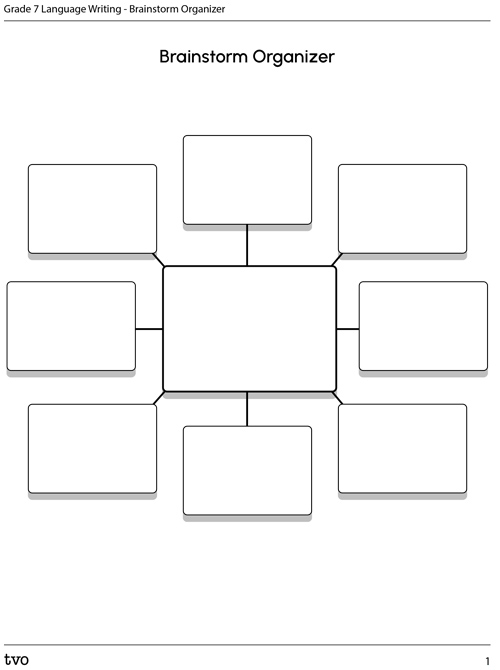Minds On
Who is it for?
In this learning activity, you are going to write for different audiences. This is an important skill especially when you must adapt your writing for a new audience.
Access the following links for each of the samples given and guess what age group (or demographic) the article or video was created for. Pay particular attention to the following:
- topic
- word choice
- sentence structure
Sample 1: What Ontario’s new budget means for seniors and long-term care
Press tvo today to access "What Ontario's new budget means for seniors and long-term care."
tvo today (Opens in a new tab)Sample 2: How this Ontario teen is dancing up a storm
Press tvo today to access "How this Ontario teen is dancing up a storm."
tvo today (Opens in a new tab)Sample 3: Now you know
Sample 4: TVO on the road: The Thousand Islands Parkway

Press tvo today to access "TVO on the road: The Thousand Islands Parkway."
tvo today (Opens in a new tab)Student Success
Think-Pair-Share
Consider the following questions on your own before sharing ideas with others.
- How did you decide the appropriate age group for each sample?
- Why might something that is written for a very young audience use shorter sentences? Does something written for a young audience always have to use short sentences?
- When might someone watch a video or read something that is typically not for their age group?
With a partner, if possible, discuss your thoughts about the questions above. Compare your answers.
Note to teachers: See your teacher guide for collaboration tools, ideas and suggestions.
Action
Choosing a target audience
Your writing and how you share information can change drastically depending on who your target audience is. We are going to practise shifting our own writing for different audiences.
Brainstorm
Part 1: Topic ideas
Choose a sport, game, or hobby that you feel like you can explain very well. Brainstorm everything you know about your chosen topic. Complete the Brainstorm Organizer in your notebook or use the following fillable and printable document to gather your thoughts.
Part 2: Write for a friend
Using your brainstorm as a starting point, write 1-2 paragraphs about your topic. For this learning activity, you can record your ideas using speech to text software, paper, or a computer. When writing, focus on the idea that you are targeting somebody roughly your age.
If possible, exchange your draft with a partner. Read each other’s work and note:
- three things that your partner did well in their writing
- two things they could improve on (be specific and constructive in your feedback)
- one way your partner used word choice or sentence structure appropriately to write for this audience
Revise your work based on the feedback from your partner.
Part 3: Write for a different audience

Now take your same piece of writing and adapt it so that a kindergarten student could understand it. Note that not every student in kindergarten may be at the stage of being able to read, so you can imagine that an adult is reading your text to them. Reflect on these questions before, during, and after your writing:
- What words may be unfamiliar to a young child, and how could you change them to make the text more accessible?
- How do you need to adapt your sentences to make the ideas easier to understand?
- How can you make changes while also still sharing the same amount of information?
- What could you add to your writing to make it more kindergarten-friendly?
Consolidation
Conveying your ideas

Imagine you have been called upon to share your knowledge at a convention for your chosen topic. The audience will be filled with a mix of professionals and adults who are interested in learning more about your topic.
You are going to adapt the same piece of writing for this audience. You can start with either the first draft written for someone your age or the second draft written for kindergarten.
Reflect on the following questions before, during, and after your writing to help you revise your work as you go:
- How can you share your knowledge about the topic while at the same time make it interesting for people in the audience who may already know it?
- What words or sentences do you need to adapt for this new audience?
- How did you change your voice in your writing for each new audience?
- What new information or interesting points could you add that would be appropriate for this audience?
Student Success
Think-Pair-Share
If possible, exchange your draft with a partner. Read each other’s work and note:
- three things that your partner did well in their writing
- two things they could improve on (be specific and constructive in your feedback)
- one way your partner used word choice or sentence structure appropriately to write for this audience
Use the feedback gained to revise your work and complete a final draft.
Note to teachers: See your teacher guide for collaboration tools, ideas and suggestions.
Reflection
As you read the following descriptions, select the one that best describes your current understanding of the learning in this activity. Press the corresponding button once you have made your choice.
I feel...
Now, expand on your ideas by recording your thoughts using a voice recorder, speech-to-text, or writing tool.
When you review your notes on this learning activity later, reflect on whether you would select a different description based on your further review of the material in this learning activity.
